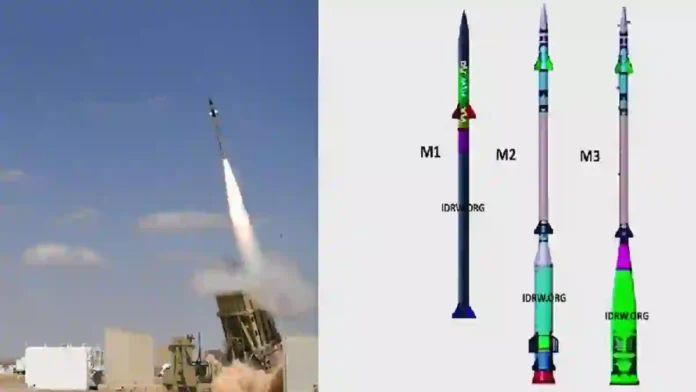The installation of portable launcher and jet deflector systems is set to commence shortly in preparation for the inaugural test firing of the M1-interceptor missile under Project Kusha, marking a significant step forward in India’s indigenous air defence capabilities.
Project Kusha, officially known as the Extended Range Air Defence System (ERADS) or Program Long Range Surface-to-Air Missile (PGLRSAM), is a flagship initiative led by the Defence Research and Development Organisation (DRDO).
The project was approved by the Cabinet Committee on Security (CCS) in May 2022 and received Acceptance of Necessity (AoN) from the Ministry of Defence in September 2023, with an allocated budget of ₹21,700 crore (US$2.6 billion) for the acquisition of five squadrons by the Indian Air Force.
Read- India’s Defence Manufacturing Revolution: Private Sector Partnership Transforms TEJAS Production
The M1-interceptor, with a range of 150 km, represents the first of three missile variants under development, alongside the M2 (250 km) and M3 (350 km). These missiles are designed to provide a multi-layered defence shield, capable of neutralizing a wide spectrum of aerial threats including stealth fighters, cruise missiles, drones, and precision-guided munitions.
The M1 missile features advanced guidance systems such as an Active Electronically Scanned Array (AESA) seeker, infrared (IR) and radio frequency (RF) guidance, and a dual-pulse motor for enhanced manoeuvrability. The system boasts a single-shot kill probability exceeding 80%, which increases to over 90% in salvo launch mode.
The upcoming test is scheduled to take place from Launch Complex-IV (LC-IV) at Dhamra, Odisha, and is expected to occur in early June 2025. The installation of portable launchers and jet deflectors is a critical pre-test activity, ensuring safe and efficient missile deployment and launch.
The launcher’s portability underscores the system’s transportability, a key requirement for rapid deployment across various operational theatres. The jet deflector is essential for managing the intense exhaust and heat generated during missile ignition, protecting both personnel and equipment on the ground.
DRDO’s preparations for the test have been robust, with the fabrication of five M1 prototypes completed by August 2024 and orders placed for 20 sets of airframes, 20 rocket motors, 50 kill vehicles (warheads), and telemetry transceivers. The M1 missile is based on the Akash-NG airframe, incorporating a booster with a length of 1,150 mm and a grain mass of 135 kg.
It utilises Thrust Vector Control (TVC) and a new ‘Indhan-1’ propellant for improved performance. The kill vehicle is equipped with a Seeker Stabilization and Tracking System (SSTS) similar to that of the Akash-NG, enabling it to track targets with a velocity of 2,300 m/s and a radar cross-section of 2 m² at ranges exceeding 20 km.
Project Kusha is envisioned to bridge the capability gap between India’s existing MR-SAM (80 km) and the Russian S-400 (400 km) systems, and will complement other air defence assets such as the Indo-Israeli Barak-8 and the indigenous Ballistic Missile Defence (BMD) system.
The system will integrate seamlessly with the Indian Air Force’s Integrated Air Command and Control System (IACCS), enabling real-time coordination with military and civilian radars for enhanced situational awareness and response.
The imminent installation of portable launchers and jet deflectors for the M1-interceptor test firing under Project Kusha represents a pivotal milestone in India’s ongoing efforts to develop a robust, indigenous, and multi-layered air defence architecture, capable of countering emerging threats and safeguarding national airspace.
IDN
Agencies




